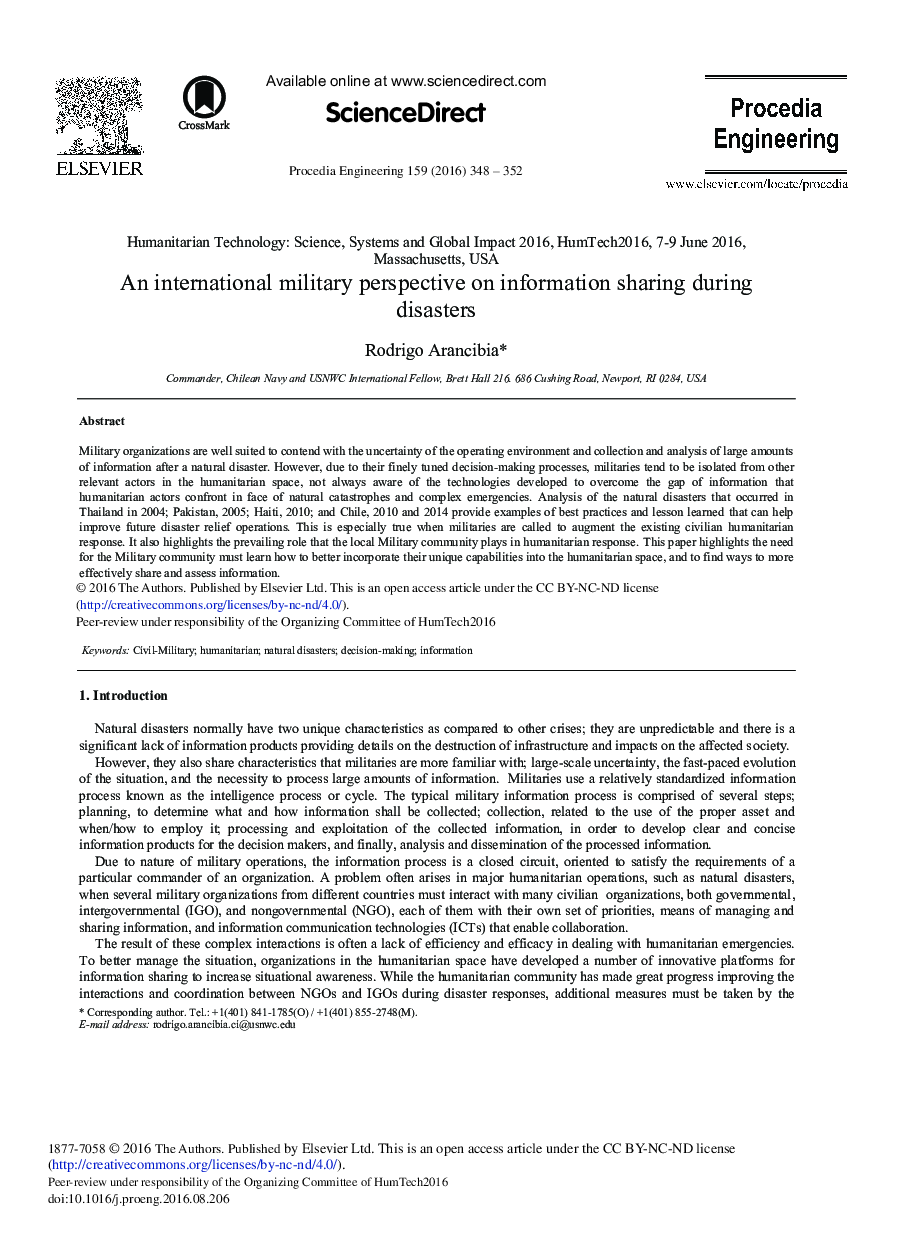| Article ID | Journal | Published Year | Pages | File Type |
|---|---|---|---|---|
| 5030116 | Procedia Engineering | 2016 | 5 Pages |
Abstract
Military organizations are well suited to contend with the uncertainty of the operating environment and collection and analysis of large amounts of information after a natural disaster. However, due to their finely tuned decision-making processes, militaries tend to be isolated from other relevant actors in the humanitarian space, not always aware of the technologies developed to overcome the gap of information that humanitarian actors confront in face of natural catastrophes and complex emergencies. Analysis of the natural disasters that occurred in Thailand in 2004; Pakistan, 2005; Haiti, 2010; and Chile, 2010 and 2014 provide examples of best practices and lesson learned that can help improve future disaster relief operations. This is especially true when militaries are called to augment the existing civilian humanitarian response. It also highlights the prevailing role that the local Military community plays in humanitarian response. This paper highlights the need for the Military community must learn how to better incorporate their unique capabilities into the humanitarian space, and to find ways to more effectively share and assess information.
Related Topics
Physical Sciences and Engineering
Engineering
Engineering (General)
Authors
Rodrigo Arancibia,
